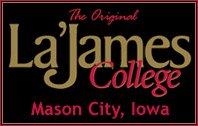AMES, Iowa ñ July 25, 2011 ñ Iowa’s 2011 corn crop is on pace to be one of the largest ever recorded, and as the corn grows taller, motorists are urged to use extra caution at roadway intersections and railroad crossings where the driver’s view may be obstructed.
Iowa Department of Transportation (DOT) statistics show during 2010 there were 46 crashes at rural intersections attributed to obstructed views by trees or crops. One person died as a result of these crashes and at least 49 people were injured. The state normally sees approximately two fatalities each year due to sight obstructions on rural gravel intersections and driveways.
Most rural intersections are not marked with stop or yield signs. Highway-rail grade crossings are marked with a crossbuck that serves as a yield sign. “Anytime a driver does not have a clear view of what may be coming from a side road, the driver needs to use extra caution,” said Jeremey Vortherms, the Iowa DOT’s state safety engineer, “When on a rural road, it is easy to focus on your own driving and forget that there are others sharing the road with you.”
Vortherms said motorists should treat these intersections as if they had stop or yield signs posted, and not enter the intersection or cross the railroad tracks until they are absolutely certain no vehicles are coming from the side roads or trains are present, and then proceed with caution.
The appearance of dust from an approaching vehicle on a gravel roadway is often used by motorists as a signal to slow down at a rural intersection. Wet weather and special roadway treatments can hold down the dust and make it more difficult to tell if a motor vehicle is approaching on a side road. Loose gravel can make controlling a vehicle difficult when making any sudden stop. “Speed is often a factor in rural crashes,” added Vortherms. “Defensive driving at slower speeds on rural roads is critical at this time of year.”
Trains can be difficult to spot when tall corn limits the view at a rural crossing. Tammy Nicholson, director of the Iowa DOT’s Office of Rail Transportation says, “Although trains are considerably taller than most crops, it still becomes difficult to see them approaching at an uncontrolled intersection where the view is obstructed by vegetation or other visibility hazards.” Nicholson reminds motorists to “Look, Listen and Live” when crossing railroad tracks.|








